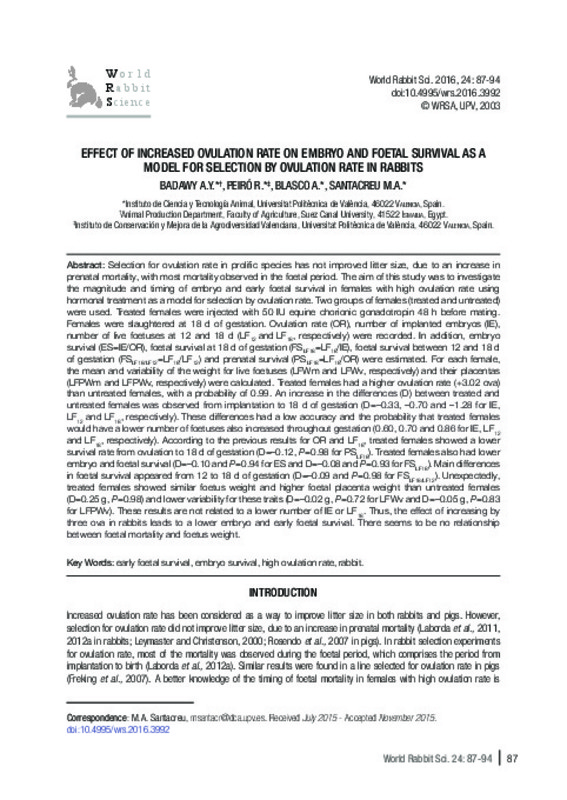JavaScript is disabled for your browser. Some features of this site may not work without it.
Buscar en RiuNet
Listar
Mi cuenta
Estadísticas
Ayuda RiuNet
Admin. UPV
Effect of increased ovulation rate on embryo and foetal survival as a model for selection by ovulation rate in rabbits
Mostrar el registro completo del ítem
Badawy, A.; Peiro, R.; Blasco Mateu, A.; Santacreu Jerez, MA. (2016). Effect of increased ovulation rate on embryo and foetal survival as a model for selection by ovulation rate in rabbits. World Rabbit Science. 24(2):87-94. https://doi.org/10.4995/wrs.2016.3992
Por favor, use este identificador para citar o enlazar este ítem: http://hdl.handle.net/10251/68956
Ficheros en el ítem
Metadatos del ítem
| Título: | Effect of increased ovulation rate on embryo and foetal survival as a model for selection by ovulation rate in rabbits | |
| Autor: | Badawy, A.Y. Peiro, R. | |
| Entidad UPV: |
|
|
| Fecha difusión: |
|
|
| Resumen: |
[EN] Selection for ovulation rate in prolific species has not improved litter size, due to an increase in prenatal mortality, with most mortality observed in the foetal period. The aim of this study was to investigate the ...[+]
|
|
| Palabras clave: |
|
|
| Derechos de uso: | Reserva de todos los derechos | |
| Fuente: |
|
|
| DOI: |
|
|
| Editorial: |
|
|
| Versión del editor: | https://doi.org/10.4995/wrs.2016.3992 | |
| Código del Proyecto: |
|
|
| Agradecimientos: |
This study was supported by the Comision Interministerial de Ciencia y Tecnologia CICYT- AGL2011-29831-C03-01 and by funds from Generalitat Valenciana research programme (Prometeo 2009/125). A.Y. Badawy was supported by a ...[+]
|
|
| Tipo: |
|









